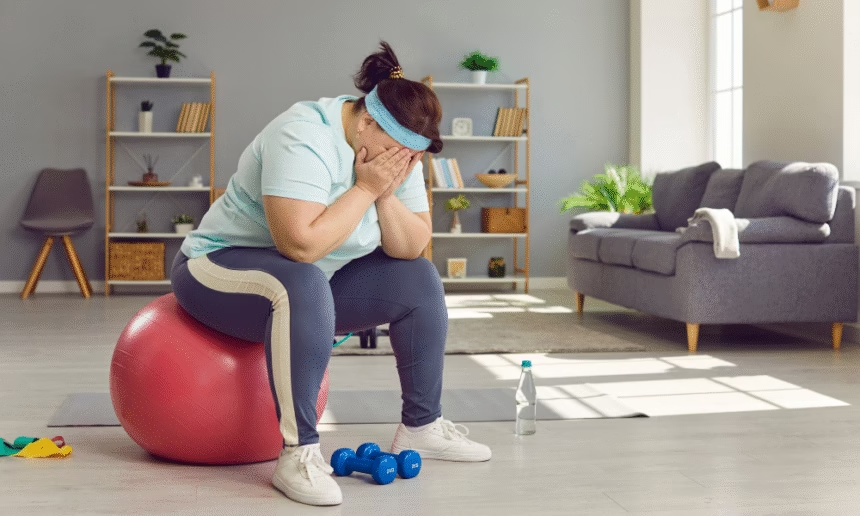Want a clear plan you can start today, with zero kit, in just 15 to 25 minutes a day? This 30-day guide is for beginners, busy parents, students, and anyone who wants a safe, simple routine that fits real life. Expect more energy, stronger muscles, a better mood, and looser jeans if you stick with it. The promise is simple. Consistency beats perfection. You will have rest days, easy progressions, and form cues that protect your joints.
Right now, short no-equipment sessions, printable calendars, family-friendly routines, gamified bingo boards, and mindful movement are huge. November 2025 also leans into micro-HIIT sessions, bodyweight plans, habit apps, and community motivation through wearables and trackers. This guide brings those ideas together so you can move confidently. It is all about fitness challenges home that are doable and repeatable.
Here is what you will get: why a 30-day challenge works, a week-by-week plan, three daily templates, exact exercises with options, motivation tools, and easy ways to track progress. Everything is safe, grounded in good form, and includes rest days you will actually respect.
What a 30-Day Home Fitness Challenge Is and Why It Works
A 30-day home challenge is a simple habit plan. You do short, focused sessions each day, so moving becomes part of your routine. Small steps add up. You get steady strength gains, better stamina, and more confidence. The aim is not a miracle body. It is a routine that sticks.
Benefits make sense. You sleep better when you move during the day. Muscles get stronger when they meet light, regular stress. Short workouts clear your head, which improves focus. Stress eases as your body burns off nervous energy. In four weeks, you can see and feel small changes. You might stand taller, tighten your core, and find your clothes fit more comfortably.
Safety matters. Start easy, then add a little more each week. Keep a neutral spine, brace your core on effort, and breathe out as you push or stand. Pause if something feels sharp or wrong. Rest days help your body adapt, so do not skip them.
Who should try this? Beginners, busy adults, returners after a long break, and anyone who wants a no-fuss plan at home. If you are pregnant, just had a baby, are returning from injury, or have a heart, joint, or metabolic condition, talk to a clinician first. You can still train, you just need a tailored approach.
Real benefits you can feel in 2 weeks
- Higher energy and a calmer mood by day 10 to 14.
- Less stiffness in your back, hips, and calves.
- Better balance and more control in daily tasks.
- By day 30, expect a firmer core, better posture, and a more defined shape in your legs and shoulders. Your jeans and tees may sit better.
Who should do it, and safety first
Beginner friendly? Yes. Move at a pace that lets you keep good form. You should feel muscle effort, a steady breath, and warmth. Pain is different. Pain is sharp, pinching, or shooting. If you feel pain, stop the move and switch to the easier option.
Form beats speed. Every time. If you lose form, cut the reps or slow down.
If you are pregnant, have a chronic condition, or are returning from a significant injury, check with your doctor or physio first. Adaptations make training safer and more effective.
Trends to make it stick in 2025
- Short no-equipment sessions you can do anywhere.
- Printable calendars you tick daily.
- Family challenges and buddy groups for support.
- Fitness bingo cards and streak goals to keep it fun.
- Mindfulness and yoga days that balance hard sessions.
- Hydration and sleep tracking in a simple app or journal.
- Micro-HIIT, wearables, and AI coaching are popular, but not required.
Fitness challenges home: your 30-day plan you can stick to
Here is a clear plan you can follow with a busy schedule. You get a weekly rhythm, rest built in, plus two time options: a 20-minute standard and a 15-minute fast track. No kit needed. A small space is fine. Keep it simple and smooth.
- Standard 20-minute plan: 3 to 4 rounds or intervals.
- Fast track 15-minute option: 2 rounds, shorter work blocks.
- Warm-up first, cool down after. Always.
You will see the schedule below. We will save the full exercise list for the exercise section later. For now, focus on flow and themes.
Week-by-week roadmap
- Week 1, Form Week: Learn technique, light reps, low impact. Daily themes:
- Monday Strength Foundations
- Tuesday Cardio Basics
- Wednesday Core plus Mobility
- Thursday Strength Reps
- Friday Cardio Easy Intervals
- Saturday Mobility Reset
- Sunday Rest and Gentle Walk
- Week 2, Build Week: Add a few reps, try gentle intervals.
- Monday Strength Circuit
- Tuesday Cardio Intervals
- Wednesday Core plus Mobility
- Thursday Strength Circuit
- Friday Cardio Intervals
- Saturday Mobility Reset
- Sunday Rest and Gentle Walk
- Week 3, Mix Week: Combine strength, cardio, and core circuits.
- Monday Strength plus Core
- Tuesday Cardio plus Mobility
- Wednesday Strength plus Cardio
- Thursday Core plus Mobility
- Friday Strength plus Cardio
- Saturday Mobility Reset
- Sunday Rest and Gentle Walk
- Week 4, Push then Deload: Nudge effort early in the week, reduce volume before a simple final test.
- Monday Strength Capacity
- Tuesday Cardio Capacity
- Wednesday Core Stability
- Thursday Light Mobility Deload
- Friday Simple Test Day
- Saturday Mobility Reset
- Sunday Rest and Reflect
Daily 20-minute templates that fit any day
Pick one of these templates per your theme. If busy, use the fast track.
- Strength Circuit Day:
- Warm-up 5 minutes.
- 3 to 4 moves, 8 to 12 reps each, 3 rounds.
- Rest 45 to 60 seconds between rounds.
- Cardio Intervals Day:
- Warm-up 5 minutes.
- 30 seconds work, 30 seconds easy, 8 to 10 rounds.
- Rotate two to three cardio moves.
- Core plus Mobility Day:
- Warm-up 3 minutes.
- Core holds and controlled reps for 10 minutes.
- Mobility flow for 5 to 7 minutes.
- Fast track 15-minute option:
- Cut one round, or use 20 seconds work, 40 seconds easy for cardio.
- Keep warm-up and cool-down short, not skipped.
Warm-up and cool-down that protect your joints
Warm-up, 5 minutes:
- March in place, 60 seconds.
- Arm circles, 30 seconds each way.
- Hip hinges to wake the back, 60 seconds.
- Ankle rocks, 30 seconds each side.
- Easy torso turns, 60 seconds.
Cool-down, 5 minutes:
- Slow nasal breathing, 60 to 90 seconds.
- Hamstring stretch, 30 seconds each side.
- Hip flexor stretch, 30 seconds each side.
- Chest opener against a wall, 30 seconds each side.
- Calf stretch, 30 seconds each side.
No kit, small space, no problem
- For tight spaces: step-ups on a stair, wall push-ups, slow high knees, shadow boxing.
- Low-impact swaps: step jacks instead of jumping, marching instead of running in place.
- Protect wrists: use fists or forearms for planks, or elevate hands on a bench or sturdy chair.
- Use a chair or wall for balance when needed. Controlled tempo keeps noise down on thin floors.
Exercises that work at home: strength, cardio, and core made simple
Keep it clean and safe. Focus on control, smooth tempo, and breathing out on the effort. Aim for 2 to 3 rounds of 8 to 15 reps, or timed sets. Adjust to your current level.
Strength circuit you can trust
- Squat or chair sit-to-stand
- Cue: Sit back, knees track over mid-foot, chest proud.
- Easier: High chair height, slow sit then stand.
- Harder: Tempo squat, 3 seconds down, 1 second pause, stand tall.
- Reverse lunge or split squat hold
- Cue: Long spine, front knee stacks over ankle.
- Easier: Hold a split squat at half depth, use a wall for balance.
- Harder: Full reverse lunge with a gentle knee tap, add a pulse at the bottom.
- Push-up (wall, knees, or full)
- Cue: Brace ribs down, elbows at about 45 degrees.
- Easier: Wall push-up, step feet back for just enough challenge.
- Harder: Full push-up, slow down phase, or add a shoulder tap at the top.
- Hip hinge or glute bridge
- Cue: Hinge from hips, not spine; drive through heels.
- Easier: Glute bridge with a pause at the top, hands flat on the floor.
- Harder: Single-leg bridge or tempo hinge with a backpack for weight.
Cardio that fits your space
Use low-impact swaps if needed. Beginners can try 30 seconds on, 30 seconds off, for 8 to 10 rounds.
- Jumping jacks or step jacks
- Low-impact: Step one foot at a time, arms to shoulder height.
- High knees or march in place
- Low-impact: Fast march with big arm drive.
- Fast feet
- Low-impact: Quick tiny steps, light on toes, keep it quiet.
- Shadow boxing
- Low-impact: Soft knees, quick hands, keep hips square.
- Stair step-ups
- Low-impact: Controlled up, controlled down, hold a rail for balance.
Core and plank progression for a solid middle
Grow the holds over the month. Stay long in the spine, brace lightly, and breathe.
- Forearm plank to high plank
- Week 1: 2 holds of 15 to 20 seconds.
- Week 2: 2 holds of 25 to 30 seconds.
- Week 3: 3 holds of 25 to 35 seconds.
- Week 4: 3 holds of 30 to 45 seconds.
- Side plank, knees bent to straight legs
- Week 1: 2 holds of 15 seconds per side, knees down.
- Week 2: 2 holds of 20 to 25 seconds, knees or straight legs.
- Week 3: 3 holds of 25 to 30 seconds, straight legs if able.
- Week 4: 3 holds of 30 to 40 seconds.
- Dead bug
- 6 to 10 slow reps per side, 2 to 3 rounds. Ribcage stays down.
- Bird dog
- 6 to 10 slow reps per side, reach long without arching.
- Hollow body tuck
- Start in a tuck hold, 10 to 20 seconds. Later, extend one leg, then both.
Mobility and flexibility mini-flow
Use this on rest or recovery days to ease stiffness and support form.
- Cat-cow, 6 to 8 slow cycles.
- Hip flexor stretch, 30 seconds each side.
- Hamstring sweep, 6 to 8 passes each side.
- Calf stretch, 30 seconds each side.
- Thoracic rotations, 6 to 8 reps each side.
- Child’s pose, 30 to 60 seconds.
Stay motivated for 30 days: track, play, and see progress
Life gets busy. Your plan should bend, not break. A simple calendar, a habit app, or a small notebook works wonders. Tick the day, add one line about energy or mood, and move on. Add gamified ideas if you enjoy them.
Recovery, hydration, basic nutrition, and sleep matter more than fancy gear. Wearables and apps can help if you already use them, but they are optional. Short workouts count, so never skip just because you cannot do the full 20 minutes.
Track progress with simple tests
Use quick tests that take under 10 minutes. Keep the same rules each time.
| Test | Day 1 Baseline | Day 15 Check | Day 30 Retest |
|---|---|---|---|
| Forearm plank hold | Record seconds | Record again | Record again |
| Push-ups, one set | Count reps | Count reps | Count reps |
| Squats in 60 seconds | Count reps | Count reps | Count reps |
| Wall sit hold | Record seconds | Record again | Record again |
- Add two photos in the same outfit, same light, on day 1 and day 30.
- Note how clothes fit, how stairs feel, and how your sleep looks.
- Celebrate small wins, like one extra push-up or 10 more seconds on the plank.
Make it fun: bingo, streaks, and family time
- Fitness bingo: create a 5 by 5 grid with tasks like 20 minutes done, 8 glasses of water, 10,000 steps, try a new mobility flow, or tech-free walk. Aim for a line each week.
- Streak goals: a tick every day you move for at least 10 minutes. Rest days count if you do the mobility flow or a gentle walk.
- Buddy check-ins: share a daily emoji or short message to keep each other honest.
- Family tweaks: partner squats to a chair, safe relay steps up and down a stair, or kid-friendly movement minutes like animal walks and shadow boxing.
Recover well: hydration, food, and sleep
- Rest days are training days. They let you adapt and grow.
- Keep easy mobility on rest days, plus a short walk if you can.
- Hydration: sip water across the day. Aim for light yellow urine.
- Simple plate guide: half veg, a palm or two of protein, a fist of fibre-rich carbs, and a thumb of healthy fats.
- Sleep: similar times each night, cool and dark room, screen light low before bed.
Troubleshooting and smart modifications
- Sore from a session? Cut reps, slow down, or choose low-impact cardio.
- A move hurts? Switch the move, not the plan. For example, swap lunges for split squats with a chair hold.
- Noisy floors? Use marching, step jacks, or shadow boxing instead of jumps.
- Missed a day? No guilt. Start the next day as planned. Consistency is a series of returns, not a perfect streak.
Conclusion
You now have a clear plan, safe exercises, and simple tools to stay on track. Pick a start date, print a calendar, and choose your daily template. Invite a friend or family member to join for support and fun. After day 30, repeat the cycle with a new goal, like a longer plank or deeper squat. Keep it steady, keep it kind, and enjoy the ease of fitness challenges home that fit your life.














